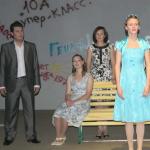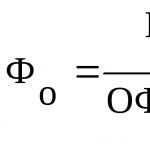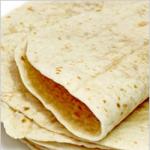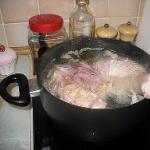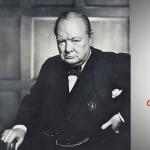Numerals are the words by which we determine the number or order of items in the bill. We know that in English as in Russian, there are cardinal numbers and ordinal numbers. More details about each of these groups you can find in the corresponding material on the blog. It remains to talk about fractional numerals in English (fractional numbers). How did these concepts are expressed in the language we are studying?
In order to understand the intricacies of the use of fractional numerals in the English language, you must remember certain information from a mathematics course. What shot did you study in school? The correct answer — simple and decimal. It is in this vein that we talk about fractional numerals.
Fractions in English
In English, in simple fractions (common fractions) expressed cardinal number numerator and the denominator — the ordinal. So do not forget how to form ordinal numbers. Moreover, if the numerator is a number greater than unity in the denominator will also end — s at the end. For example:
- ½ — a half / one half
- ⅓ — a third / one third
- ¼ — a fourth / one fourth / a quarter / one quarter
- ⅕ — a fifth / one fifth
- ⅙ — a sixth / one sixth
- ⅔ — two third s
- ¾ — three fourth s / three quarter s
- ⅘ — four fifth s
- ⅚ — five sixth s
- 1 ½ — one and a half
- 2 ¼ — two and a fourth
- 3 ⅓ — three and a third
In what is a noun including accompanying fractional numeral in the English language? The noun of the shot will be in the singular, and it will be located in front of the preposition of:
- ⅔ kilogram (two thirds of a kilogram)
- ¾ kilometer (three fourths of a kilometer)
- ½ litre (one half of a litre)
If the noun refers to a mixed number, we use the plural noun:
- 2 ½ kilograms (two and a half kilograms)
- 3 ¾ kilometer (three and three fourths kilometers)
Decimals in English
Now let’s talk about the decimals in English (decimal fractions). In Russian we are such fractions separate the integer from the fraction with a comma. In English, for the same procedure used point. The fractions of each digit is read separately. By the way, the point in English — point, and at zero two options — nought (UK) and zero (USA). If an integer is represented in decimal zero, often reading it is lowered. For example:
- 0.1 — nought point one / point one
- 0.2 — nought point two / point two
- 0.3 — nought point three / point three
- 0.01 — nought point nought one / point nought one
- 0.02 — nought point nought two / point nought two
- 0.03 — nought point nought three / point nought three
- 3.36 — three point three six
- 6.92 — six point nine two
- 8.71 — eight point seven one
- 64.705 — six four point seven nought five
And a few words about the percentage. To indicate the percent sign is used — and the word% per cent:
- 3% — three per cent
- 4/5% — four fifths per cent / four fifths of one per cent
That’s all the information you need to know to navigate the article «Fractional numerals in the English language.» I’m sure you all have long known there remember some nuances.
This topic is closely related to the other as described in the articles that need to pay attention:
- «The numerals in the English language»
- «Cardinal numbers in English»
- «Ordinal numbers in English»
- «Dates and ordinal numbers in English»
After reading them, we recommend to pass the following test: «The test for the use of numerals in the English language.»
Сабақтың № _____ к үні __________ _________тобы № lesson ______ date __________ group _________
The theme of the lesson:
Practical work
№
9 Decimal and fractional numerals.
\
Дробные числительные
\
Educational:
-
to enlarge
students
knowledge on the decimal and fractional numerals.
Developing
:
-
to develop student s speaking, reading and retelling skills.
Cultural
:
- to interest in learning English language
Teaching aids:
Cards, numbers, posters, and text.
Literature:
Organization moment.
I’m glad to see you! Take your seats!
Checking-up the homework.
Translate text.
Pronunciation
:
-
ph
, -
th
, -
sh
, -
ch
, -
ng
Warming-up.
Introduction of the new theme.
Дробные числительные /
Fractional
Numerals
1. В
простых дробях
числитель выражается количественным числительным, а знаменатель – порядковым числительным:
1/3 – a (one
)
third
1/5 – a (one
)
fifth
1/8 –
an
(one
)
eighth
Однако
читается
:
1/ 2 – a (one) half (а
не
: one second)
1/4 – a (one) quarter (реже
: a fourth)
Когда числитель больше единицы, знаменатель принимает окончание -s:
2/3 –
two
thirds
3/5 –
three
fifths
5/6 –
five
sixths
2. Существительное, следующее за дробью, стоит в единственном числе:
2/3
ton
(читается:
two
thirds
of
a
ton
)
3/4
kilometre
(читается:
three
quarters
of
a
kilometre
)
1/2
ton
(читается:
half
a
ton
)
При этом следует обратить внимание на
отсутствие артикля
перед
half
и на отсутствие
предлога
of
перед существительным.
3. Существительное, к которому относится
смешанное число
, употребляется во множественном числе:
2 1/2
tons
(читается:
two
and
a
half
tons
или
two
tons
and
a
half
)
4 1/3
tons
(читается:
four
and
a
third
tons
или
four
tons
and
a
third
)
При чтении смешанного числа, целое число которого равно единице, существительное употребляется во множественном числе, когда оно читается после смешанного числа. Когда же существительное читается между единицей и дробью, оно употребляется в единственном числе:
1 1/2
hours
(читается:
one
and
a
half
hours
или
one
(an
)
hour
and
a
half
)
1 1/3
pounds
(читается:
one
and
a
third
pounds
или
one
(a)
pound
and
a
third
)
4. В
десятичных дробях
целое число отделяется от дроби
точкой
(в русском – запятой). При чтении десятичных дробей каждая цифра читается отдельно. Точка, отделяющая целое число от дроби, читается
point
. Нуль читается
nought
. Если целое число равно нулю, то оно часто не читается:
0.25 –
nought
point
two
five
или
point
two
five
14.105 –
one
four
(или
fourteen
)
point
one
nought
five
Существительное, следующее за десятичной дробью, стоит в единственном числе, когда целое число равно нулю:
0.25
ton
(читается:
nought
point
two
five
of
a
ton
)
В других случаях существительное стоит во множественном числе:
1.25
tons
(читается:
one
point
two
five
tons
)
23.76
tons
(читается:
two
three
point
seven
six
tons
или
twenty-three
point
seven
six
tons
)
5.
Проценты
обозначаются следующим образом:
2% или 2
per
cent
. или 2 р.
с
. (читается:
two
per
cent
)
Per
cent
(сокращенно р. с.), как и русское
слово
процент
, происходит от латинского
pro
centum
за сто
. В русском языке эти два слова слились в одно, которое стало существительным и употребляется как в единственном, так и во множественном числе. В английском языке
cent
не принимает окончания -s.
Дробные доли
одного процента обозначаются следующим образом:
3/8% или 3/8
per
cent
или 3/8
p.c
. (читается:
three
eighths
per
cent
, или
three
eighths
of
one
per
cent
.)
1/2%
или
1/2 per cent
или
1/2 p.c. (читается
:
а
half per cent,
или
a half of one per cent.)
0.2%
или
0.2 per cent
или
0.2 p.c. (читается
:
nought
point two per cent,
или
nought
point two of one per cent).
Consolidation .
Write the fractions as words.
- 12 →
- 34 →
- 23 →
- 78 →
- 110 →
- 0.0157985
- zero point zero one five seven nine eight five
- zero point zero fifteen seventy-nine eight-five
- 3.1977
- three point one nine seventy-seven
- three point one nine seven seven
- 11.5
- one one point five
- eleven point five
- 0.9516
- naught point nine five one six
- naught point ninety-five one six
- 12.8
- twelve point eight
- one two point eight
- ten point five →
- one quarter →
- four fifths →
- naught point seven six nine →
- seven eighths →
1/2 - a half [э хаф ] 1/3 - a / one third [ уан с өд ] 3/4 - three quarters [ с ри куотэз ] 2/9 - two ninths [ту найн с ] 0.25 - zero / nought point two five [ зиэроу /нот пойнт ту файв ] 2.456 - two point four five six [ту пойнт фо файв ] 7.089 - seven point o eight nine [ севн пойнт оу ейт найн ] .7 - point seven [ пойнт севн ]
1. Fractions
Fractions , which express quantities less than one , should not cause many problems for students of English, once they have understood how they are formed.
Except for the most common fractions, ¼ ½ and ¾ , fractions are made up of a cardinal number (one, two, three etc.) followed by an ordinal , usually in the plural (thirds, fifths, sixth s etc.)
Here are the most common fractions in English, and a few others as random examples.
| 1/4 | a quarter (occasionally a fourth) | 3/16 | three
sixteenths |
| 1/2 | a half | 1/32 | one thirty-second |
| 3/4 | three quarters | 7/9 | seven ninths |
| 1/3 | a third | 1/100 | a hundredth or one hundredth |
| 2/3 | two thirds | 12/100 | twelve hundredths |
| 3/8 | three eighths | 21/1000 | twenty-one thousandths |
Fractions are used in all styles of language, including scientific and technical English. Don"t forget that North Americans, notably people in the USA, have not fully adopted the decimal system like most of the rest of the world, and still use non-metric measurements such as feet and inches.... and fractions of these..
Examples:
Half a pint of beer
A quarter of a
second
Three quarters of
a mile
Three fifths of
the contents of the bottle.
A thickness of one
thirty-second of an inch.
A tolerance of six
thousandths of a millimetre
Using decimals in English
Decimals are regularly used in everyday English, but more specifically in scientific and technical English, in order to indicate with precision quantities that are not a complete number.They are not difficult to use..
After the decimal point figures are expressed digit by digit. The words hundred and thousand are never used after the decimal point.
Note that the decimal point is precisely that; a point , never a comma .
Before a decimal point, for a quantity less than 1, one normally begins (British English) nought point ... or (all forms of English) zero point ... .
But after the decimal point, the 0 is expressed as "oh " or "nought " or "zero "
| 0.25 | point two five or nought point two five, or zero point two five |
8.56 | eight point five six |
| 0.5 | point five, or nought point five, or zero point five | 12.15 | twelve point one five |
| 0.75 | point seven five, or nought point seven five or zero point seven five | 17.806 | seventeen point eight oh six |
| 0.333 | point three three three, or nought point three three three, or zero point three three three | 384.63 | three hundred and eighty-four point six three |
| 0.6405 | nought point six four oh five or zero point six four zero five |
40.004 | Forty point oh oh four ou Forty point nought nought four, ou Forty point zero zero four |
| 1.5 | one point five | 117.87659 | one hundred and seventeen point eight seven six five nine |
Examples:
Written;
It
was 0.2445 mm thick
Oral;
It was nought point two four
four five millimetres thick.
Written;
The long side measures 6.652 in.
Oral;
The long side measures six
point six five two inch
es.
Written;
The solar vehicle reached a
record
speed of 131.68 m.p.h.
Oral;
The solar vehicle reached a
record
speed of a hundred and thirty-one point six eight miles an
hour ( or
miles per hour).
Translating
numbers:
The rules are simple... and important ;
.
This means that people using decimals in an international or
multilingual context must be quite clear of the system they are using.
Otherwise figures like 123.456 or 123,456 will mean quite
different things to different people. Normally, context will be
sufficient to clarify what is being meant; but not always. In
computing, computers may well not be able to make a contextual
judgement.
ПОРЯДКОВЫЕ ЧИСЛИТЕЛЬНЫЕ (ORDINAL NUMERALS)
1. Порядковые числительные образуются путем прибавления суффикса -th к соответствующим количественным числительным:
four-(the) fourth (четвертый)
seven-(the) seventh (седьмой)
eighteen-(the) eighteenth (восемнадцатый)
Исключение составляют числительные one , two , three :
one-(the) first (первый)
two-(the) second ["sekond] (второй)
three-(the) third (третий)
При образовании порядковых числительных от числительных five , eight , nine , twelve перед суффиксом -th изменяется написание основы:
five-(the) fifth (пятый)
eight-(the) eighth (восьмой)
nine-(the) ninth (девятый)
twelve-(the) twelfth (двенадцатый)
При образовании порядковых числительных от количественных числительных, оканчивающихся на -ty , конечное -у меняется на -ie :
twenty-(the) twentieth (двадцатый)
forty-(the) fortieth (сороковой)
При образовании составных порядковых числительных только последний разряд приобретает форму порядкового числительного:
(the) forty-eighth (the) fifty-third
(сорок восьмой пятьдесят третий)
2. Существительные, определяемые порядковыми числительными, употребляются с определенным артиклем:
The first mention of Moscow was in 1147
(Первое упоминание о Москве относится к 1147 году)
При обозначении номеров комнат, домов, трамваев, автобусов, троллейбусов, глав, параграфов, размеров одежды и обуви вместо порядковых числительных могут употребляться количественные числительные, при этом артикль the опускается, а числительное ставится после существительного, к которому оно относится:
the sixth room - room six (шестая комната - комната шесть)
the eighteenth page - page eighteen (восемнадцатая страница - страница восемнадцать)
http://www.homeenglish.ru/Grammarnumeralor.htm
ДРОБНЫЕ ЧИСЛИТЕЛЬНЫЕ ( FRACTIONAL NUMERALS )
1. В простых дробях (Common Fractions ) числитель выражается количественным числительным, а знаменатель порядковым:
1/7- one seventh (одна седьмая)
При чтении простых дробей, если числитель их больше единицы, к знаменателю прибавляется окончание множественного числа - s :
2/4 - two fourths -(две четвертых)
2/3 - two thirds -(две третьих)
3 1/5 - three and one fifth -(три целых и одна пятая)
1/2 - one second, a second, one half, a half -(одна вторая, половина)
1/4 -one fourth, a fourth, one quarter, a quarter -(одна четвертая, четверть)
2. В десятичных дробях (Decimal Fractions ) целое число отделяется точкой, и каждая цифра читается отдельно. Нуль читается nought (в США - zero ["zierou]) .
4.25 four point twenty-five; four point two five
0.43 nought point forty-three; nought point four three
3. Существительные, следующие за дробью, имеют форму единственного числа, и перед ними при чтении ставится предлог - of :
2/3 metre- two thirds of a metre
(две третьих метра)
0.05 ton - nought point nought five of a ton
(ноль целых пять сотых тонны)
Существительные, следующие за смешанным числом, имеют форму множественного числа и читаются без предлога of :
35 1 /9 tons -thirty-five and one ninth tons
14.65 metres -one four ( или fourteen) point six five ( или sixty-five) metres
4. В обозначениях номеров телефонов каждая цифра читается отдельно, нуль здесь читается [ о u ]:
We use fractions to indicate partial amounts. They are not just used in mathmatics but also in recipes (½ litre water). Decimals are separated by a decimal point.
Construction
We use both cardinal and ordinal numbers to create fractions. The numerator (the numeral above the line) is always a cardinal number. The denominator (the numeral below the line) is always an ordinal number.
| 1/3 | one third | 1/10 | one tenth |
| 1/5 | one fifth | 1/20 | one twentieth |
| 1/6 | one sixth | 1/100 | one hundredth |
| 1/8 | one eighth | 1/1000 | one thousandth |
Exceptions:
| 1/2 | one half |
| 1/4 | one quarter |
Numerators Greater Than One
When a numerater is greater than one, we use the denominator in plural (we add an s ).
| 2/3 | two thirds | 2/7 | two sevenths |
| 3/4 | three quarters | 4/8 | four eighths |
| 4/5 | four fifths | 5/10 | five tenths |
| 3/6 | three sixths | 6/12 | six twelfths |
Decimal Numbers
Decimal numbers are written with a decimal point. The digits after the decimal point are said separately.
Example: 0.135 - nought point one three five (US: zero point one three five) 3.14159 - three point one four one five nine
Singular and Plural with Fractions and Decimals
If we want to say exactly what the fraction or decimal refers to and the value is less than one, we use the contruction of a + singuar noun. (except for 1/2, see last example)
Example: 3/4 T → three quarters of a ton 2/3 km → two thirds of a kilometre 0.743 cm → nought point seven four three of a centimetre 1/2 l → half a litre (not : one half of a litre)
If the value of the fraction or decimal is greater than one, the numeral is followed directly by a plural noun .
Example: one and a half hours three and a quarter kilos 2.5 millimetres






